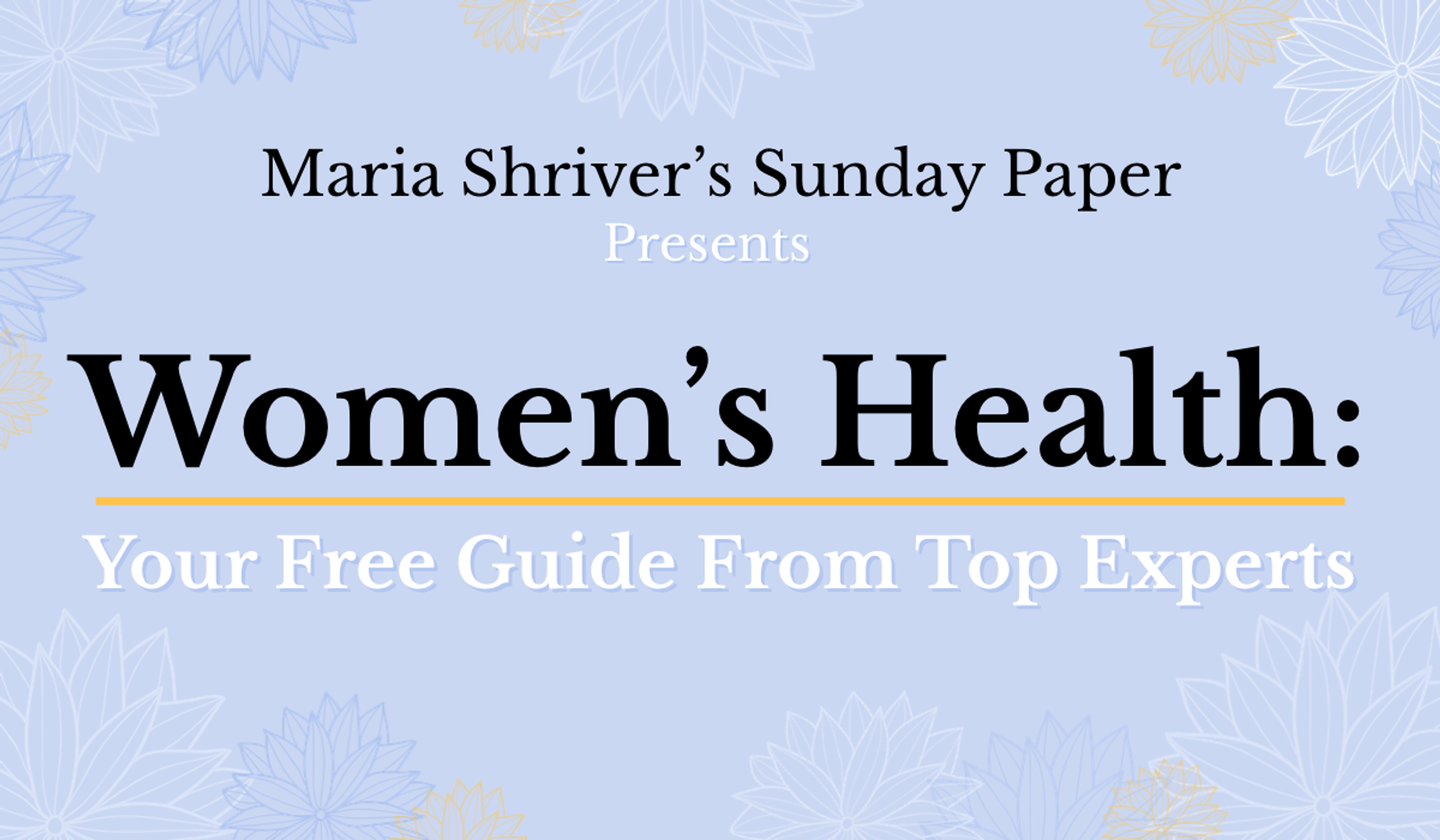The World Feels Chaotic but You Don’t Have to
Chaos surrounds us these days, which means we’re tasked with facing many stressful and challenging situations. How we deal with those moments is fascinating: When we’re under stress, our brains are wired to react in ways—often steeped in fear, anxiety, or old habits—that aren’t always the best for the present situation.
The good news is that we can learn to change this and employ what Jacqueline Brassey and her co-authors call “deliberate calm.” A holistic practice of tools to help us employ measured, powerful skills in stressful situations, deliberate calm teaches us to be effective and adaptable—even when it’s hard. Years ago, Brassey, a co-leader at the McKinsey Health Institute and senior knowledge expert at McKinsey & Company, went through a confidence crisis, which led her to develop a research-and evidence-based toolkit to build authentic confidence. She used these tools for her healing and brought them to McKinsey and other organizations. Those learnings, along with her experience and education in leadership development and neuroscience, inspired the co-creation of her new book, Deliberate Calm: How to Learn and Lead in a Volatile World.
In the book Brassey and co-authors, Aaron De Smet and Michiel Kruyt look at the practice and experience of working with business leaders that go through intense stress and uncertainty. The book pulls from leadership examples but its message is for all of us. It’s accessible, enlightening, and utterly helpful. And as Brassey adds, it’s all about awareness and learning.
A Conversation with Jacqueline Brassey
Starting out, what is deliberate calm?
The word deliberate means that you have a choice—a choice to be calm and intentional as you respond in the right way to any situation you face. Or in other words: you can chart your own path to calmness amidst chaos. Deliberate calm is about adaptability, it is about successfully navigating periods of turbulence by adopting a sophisticated form of self-mastery which includes awareness, learning agility and emotional self-regulation. To do that, we offer a mix of tools that can be roughly divided into three layers. These tools help you to build what we call dual awareness: awareness of the situation and what it calls for and awareness of what is going on for you in the moment and responding effectively as a result.
Walk us through these three layers of tools.
The three layers of tools are building a support system, the work around that or the practice, and tools for the moment:
1. The Support System or what we refer to as "Your Personal Operating Model":
These tools include foundational work that you do along the way to set yourself up for success —which builds a support system for yourself and which you integrate in your day to day life. For instance, we have an entire chapter on recovery: making sure that you take care of your body, mind, spirit, and the physical aspects, mental aspects, and social aspects of health. If you're very tired, for example, you become more vulnerable to a stress reaction. But when you take breaks, eat healthily, get good sleep, and take care of your relationships, that makes for sustainable fertile ground to work from. We also offer tools to help you to think about what matters to you—your values and your purpose. Knowing what’s important to us gives us guidance in difficult situations when the stakes are high and we face an unfamiliar fork in the road. All of this comes together in a tool that we refer to as "Your Personal Operating Model."
2. The Supporting Work or the "Practice":
Then we have the active protocol in the book where we talk about various tools to apply to your day to day life. One of them includes how you start your day. Do you set an intention? We also ask people to explore what triggers the stress response for them. These tools are about building awareness about what happens to you in moments of high stress where you may not have shown deliberate calm. It helps you better understand your response. For instance, sometimes people become aware the next day and they say, ‘Gosh, I reacted in such a way that I wish I hadn't.’ So building this awareness is a starting point. Because deliberate calm means that you are aware in the moment and know what the situation calls for, and you are also aware of what happens for you in those moments so you can then intervene effectively. This is all about integrating a set of practices in your day to day life.
3. In-the-Moment Tools:
A lot is happening in stressful situations. We help you to start building a repertoire of tools for the moment when you are stressed. A great deal of this is breath work: taking deep breaths and reaching a calm state. That depends on how you breathe, of course. But you need to get yourself out of the immediate stress response in which the sympathetic nervous system has become more dominant into the more balanced calmer space where you activate the parasympathetic nervous system in support of creating a calm state, because that’s the space where it's easier for you to open up, learn and adapt.
Let’s dig into the importance of ‘recovery.’ We hear so much about self-care yet we often neglect it. Why is this so critical for staying calm and strong in stressful situations?
It’s everything. Indeed, everybody is talking about it but we live in a world where it is not easy for us. So we need to make that choice for ourselves and say "no matter what, I have a couple of non-negotiables in my life." It goes back to the simple wise example that if you drive a car and don’t put petrol in it, it will stop. So you need to be intentional about recovery and make a place for it.
Recovery is different for everybody. It does not only mean going to a spa or doing yoga. Sometimes active recovery is very important: Taking a walk or doing exercise which strains your body so it can then recover afterward. Sleep is very important. In the book, we also mention getting comfortable with discomfort, for some that may even include ice baths and cold showers. These help us also to deal with difficulty but they’re also a way of recovery because you're challenging the body and mind, then it recovers and builds resilience.
So recovery influences everything: how you feel, your well-being, and even your relationships with family and friends. And by the way, for every top leader and high performer, top athletes for example, recovery is normal practice. Because it's not possible to be high performing and handle stressful situations well without doing this.
Back to the tools. What are two tools that we can start to implement today to practice deliberate calm?
All of this work starts with awareness, becoming aware of what is going on for you when you experience stress. One starting point for practicing deliberate calm is breathing, which I mentioned, and taking a pause. When you begin to feel stressed in a situation, give yourself a moment of pause. Then get curious and explore three things:
· What's going on for me at this moment?
· What are my thoughts?
· What am I feeling in my body and where do I feel it? And what do I want to do?
If you reflect in the moment, you can begin to see the difference between what you want to do or have reactively done in the past versus the best actions for what the situation calls for. When we are stressed in the moment, what we want to do or tend to do is not always in line with what is best needed in the moment. If you take that moment to pause, take a deep breath, and step back and think about what would be more helpful for this situation, then you can choose to change how you want to respond.
This is a simplified version and it’s not necessarily easy if you don't have all the other tools we talk about in the book, but this offers you a moment of awareness.
A second tool is being kind to yourself and applying self-compassion when you make a mistake. An example would be when you’re home and things are very busy and seem to be going wrong. You may respond by saying something you wish you didn’t say. The default is often to get mad at yourself. Instead, at that moment, be kind to yourself and know that next time you’ll try better.
This again all goes back to building awareness so you notice how you respond in stressful situations and how you want to respond differently. It’s all a process. The great thing about this all is that it is a set of skills that can be learnt, they are available for everyone and they never go out of date.
Jacqui Brassey is McKinsey’s former chief scientist and the director of research science for the firm’s People & Organizational Performance Practice. Today she is a Senior Knowledge Expert in the same practice and a Co-leader at the McKinsey Health Institute. She also is a fellow researcher at Vrije Universiteit Amsterdam, an adjunct professor at IE University in Madrid, and a supervisory board member at Save the Children in the Netherlands. You can order her book, Deliberate Calm, here.
Question from the Editor: How can you envision using the practice of deliberate calm in your life? We'd love to know in the comments below.




